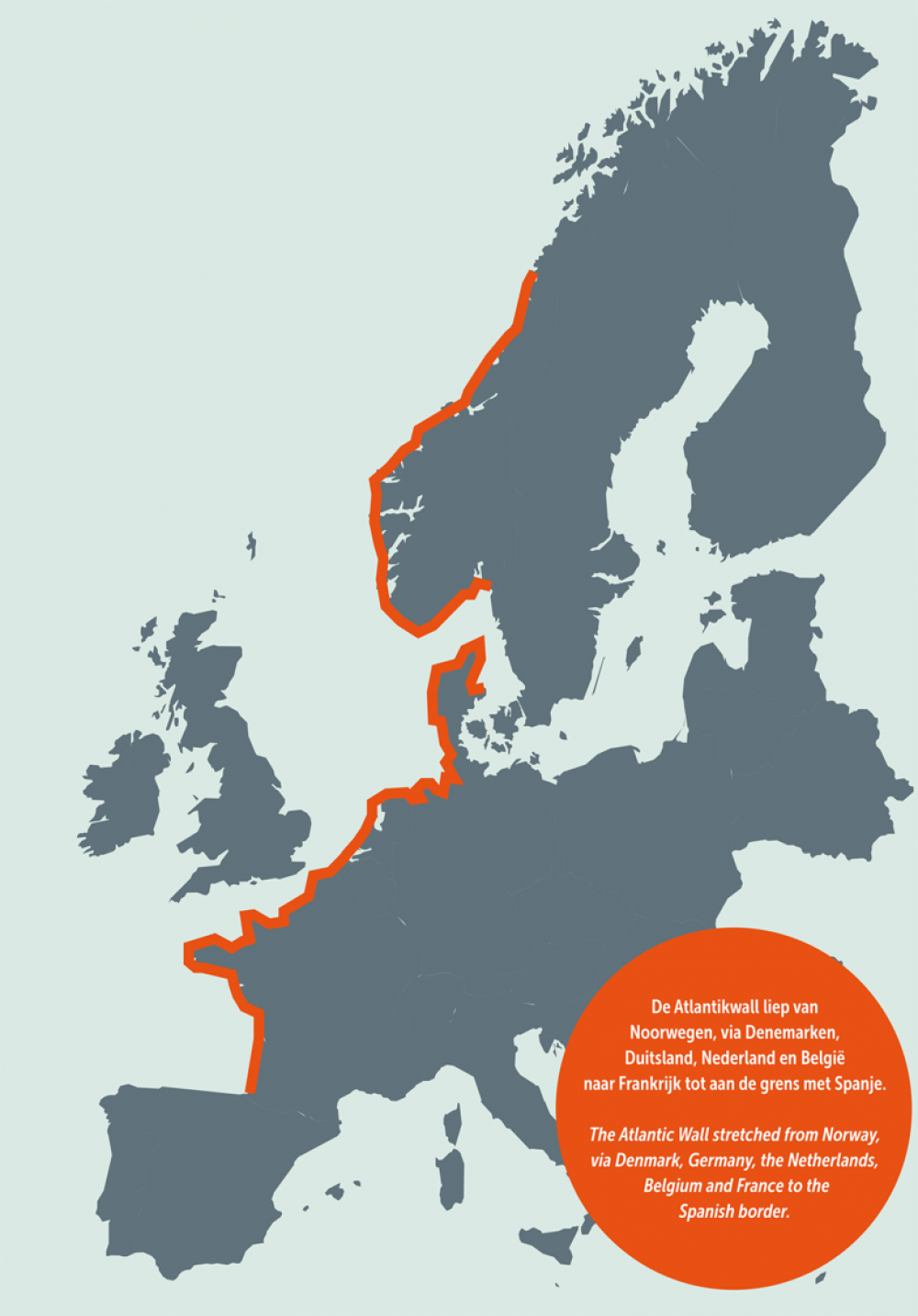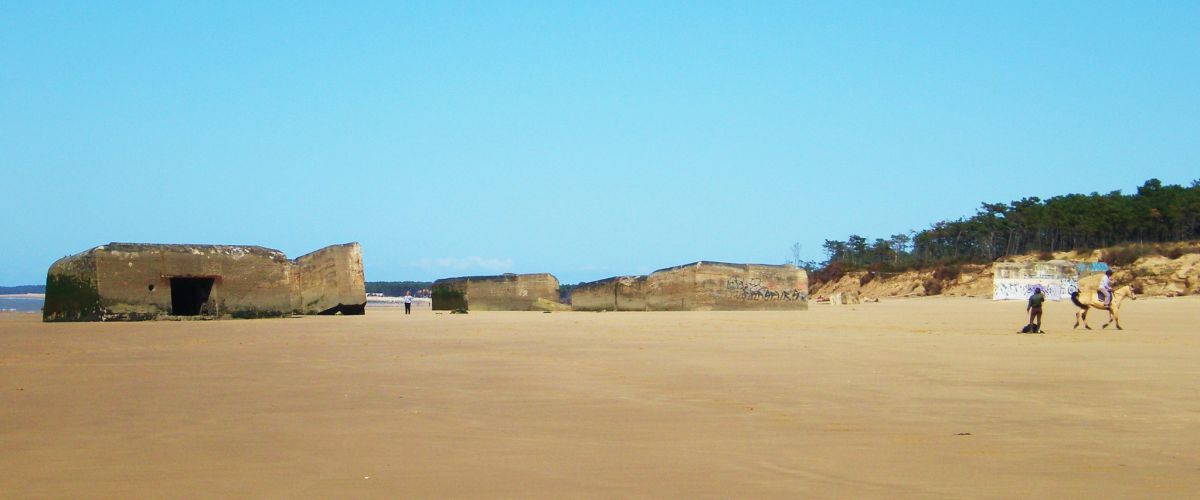The Atlantic Wall
From the summer of 1941, Hitler moved ever more troops to fight the Soviet Union on the Eastern Front. At the same time, however, Nazi Germany was expecting a sea-borne Allied invasion in the west. The solution to the dilemma was the construction of the Atlantic Wall between 1942 and 1945.

The Atilantikwall on the map
The ‘Wall’ was actually a series of concrete bunkers, manmade barriers and natural obstacles like cliffs and rocks, stretching along five thousand kilometres of North Sea and Atlantic coast from northern Norway to the Spanish border. These coastal defences turned the Nazi-occupied west of Europe into a virtually impregnable fortress that could be held by relatively few troops.
Strategic importance
Reichskommissar Seyss-Inquart administered the occupied Netherlands from The Hague. The presence of his headquarters and of the harbour at nearby Scheveningen gave the city great strategic importance. For this reason, the Atlantic Wall fortifications were supplemented by a line of defences cutting right across the city and designed to block any outflanking manoeuvre by the enemy. These additional defences took the form of a 27-metre-wide anti-tank ditch that zigzagged all the way from Kijkduin to the Gemeentemuseum, where it was succeeded by a line of other obstacles (including anti-tank walls, dragon’s teeth and another anti-tank ditch) in the direction of the Malieveld and Clingendael. At the far end, this second line of defences rejoined the coastal fortifications. The result was a high-security militarised zone or ‘fortress’ known as the Stützpunktgruppe Scheveningen-Clingendael.
Militarised zone
A large area was completely cleared to make way for the Atlantic Wall. The management of the demolition work and associated evacuation was in the hands of civilian officials. A total of over 135,000 people were forced to leave their homes and 2,400 buildings were demolished.
People with economic ties to the area were rehoused locally or ‘billeted’ on local residents. Others were accommodated elsewhere in the Netherlands. The beaches, coastal promenades and large parts of the city became a wasteland occupied only by bunkers, checkpoints and military personnel. After the war, it took many years to repair the damage and properly rehouse the population.
Peace and justice
Today, 160 international organisations work in The Hague to achieve peace, justice and security around the world. They employ a total of 18,000 people. The area just behind the Museon now accommodates major organisations like the Organisation for the Prohibition of Chemical Weapons (OPCW), Europol and the International Criminal Tribunal for the former Yugoslavia. Until 1942, however, it was an area of large detached houses known as Zorgvliet. This is one of many places in the city where war and peace, conflict and cooperation exist side by side. The Hague is a city with direct personal experience of the impact of war: a city which knows how difficult it is to repair the scars of armed conflict, but which is now a city of peace.
 Herinneringsroute Atlantikwall Den Haag
Herinneringsroute Atlantikwall Den Haag
